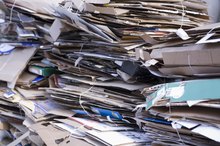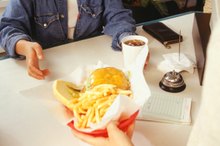The Three Major Causes of the Great Depression
Deflation
The Great Depression, which generally is considered to have begun with the stock market crash in October 1929, changed the way America worked 12. At the end of the Roaring Twenties when the stock market and the economy soared, the crash appeared inevitable in retrospect. More goods were being produced than were needed, and without people to buy them, jobs disappeared. The event was a part of a spiral that ended with production of materials for World War II. Deflation, the opposite of inflation, occurs when the basic value of money goes up. When too many goods are available, the price goes down, so money essentially is worth more. For example, during the 1920s, there was a dramatic expansion of office space in cities, particularly New York City. This meant that office space could be found all around the city, so prices went down--but no one was occupying the space. A prime example is the Empire State Building, begun in 1930 and opened in 1931. Its 102 stories went largely unoccupied throughout the Depression, and the building did not become profitable until 1950 12.
Demand
About Toothpaste Tubes Made of Metal
Learn More
During the 1920s, the United States was furiously producing products from automobiles to radios that were being purchased largely on credit. By 1929, the markets were saturated with such products and demand began to fall. Because of the runs on banks and the frantic sell-off of stocks, credit became hard to get even for those wanting a new car. Once there was a major backlog of products no one was buying, there was little money coming into the companies that made the products. This resulted in massive layoffs of workers throughout the country. Without income--and there was no unemployment insurance before Franklin Delano Roosevelt’s New Deal in the 1930s--people began to lose their homes and had little money to buy anything other than food. Demand for products and services dried up, which led to even more unemployment.
- During the 1920s, the United States was furiously producing products from automobiles to radios that were being purchased largely on credit.
- Because of the runs on banks and the frantic sell-off of stocks, credit became hard to get even for those wanting a new car.
Unemployment
Because no one had any money to buy products, the people who built the products were out of work. They also had little money to buy anything, and the spiral continued. Social programs were not government-run at the time, so there were few places to turn to for help other than religious and other charities. They, too, were strained by the sheer numbers of people turning up for bread and soup. The companies had no money coming in, so many of them folded. Those that remained had few workers. By 1933, nearly 25 percent of the workforce was unemployed.
- Because no one had any money to buy products, the people who built the products were out of work.
- Social programs were not government-run at the time, so there were few places to turn to for help other than religious and other charities.
Related Articles
References
Writer Bio
Carole Anne Tomlinson is a registered nurse with experience in rehabilitation, nutrition, chemical dependency, diabetes and health problems related to the elderly. Tomlinson holds a Bachelor of Arts in criminal justice and is presently working on her master's degree in nursing. Her screenplays have been viewed by Merchant Ivory, Angela Lansbury and Steven King's associates.









